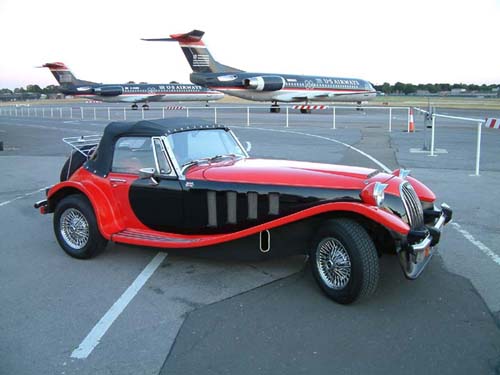There are several reasons why twin overhead camshafts per cylinder bank has been the choice of the manufacturers of high performance engines for the best part of a century.
Overhead camshafts allow the following of the camshaft profiles more accurately, particularly in engines with non-hydraulic cam-followers - such as Ferrari, BMW, Lamborghini, etc.
There are fewer parts and no pushrods to bend, break, or wear.
The configuration of twin overhead camshafts allow hemispherical combustion chambers with inlet and outlet valves on opposing sides (or variations thereof) thus promoting maximum airflow, and avoiding 'hotspots'.
Contrary to opinions expressed here, overhead camshaft engines are
not appreciably heavier than pushrod engines with hydraulic tappets.
BHP, torque characteristics, and fuel efficiency are related to a myriad factors not directly related to the location of the camshafts, so are not a direct indicator of the superiority of one type over another.
But as a generalisation, Australian and US pushrod V8 engines do not have as high specific outputs as European and Japanese DOHC engines. They are designed for 'lazy' torque characteristics, and are usually to be found in large and quite comparatively thirsty vehicles.
Example: A 3.8 litre 6-cylinder Holden Commodore Calais produces 171 Kw (235bhp), and returns 13.5 litres/100km (21 mpg) in mixed city/highway running. By way of comparison a 3 litre BMW 5301 produces 200 Kw (280 bhp), and returns 9.5 litres/100km (29 mpg) in mixed city/highway running. The Holden boasts a specific output of 61.8 bhp/litre, while the BMW produces 93.3 bhp/litre - a considerable difference.
The proof of the pudding tends to be in the eating.

I hate the idea of causes, and if I had to choose between betraying my country and betraying my friend, I hope I should have the guts to betray my country. E.M. Forster




























 - By Pants-of-dog
- By Pants-of-dog